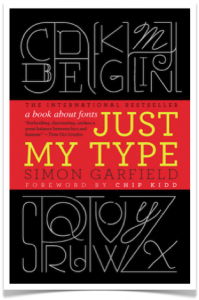Spring / Summer Reading
I feel like I’ve read more than this in the past few months, including a couple works of fiction, but I can’t remember what they were. Anyways, here’s my reading list (insofar as I can remember) in the last few months:
Enemies, by Tim Weiner: After reading Weiner’s excellent “Legacy of Ashes” (a history of the CIA) some time ago, I recently picked up his history of the FBI. While not quite as engaging as his history of the CIA, this is still a must read. Most people probably have no idea how much the FBI operated outside of the law, and arguably as a criminal enterprise for much of its history in the 20th century. If you think you should always trust the government, then you need to read something like this and see how far a government agency can go, even to the point of it holding more power than a country’s elected officials.
Faraday, Maxwell, and the Electromagnetic Field, by Nancy Forbes and Basil Mahon: This is a fairly short biography of both Michael Faraday and James Clerk Maxwell, the two most influential men in the development of the theory of the electromagnetic field. It was pretty good, entertaining enough. Definitely not a must read, but there was enough in there to keep me interested.
John Clarke, by Lisa Baile: John Clarke was an amazing British Columbian, both through his exploration of the province and his advocacy of its natural wonders and First Nations. Although he died over a decade ago, it was only recently that a biography was written for him. I never knew John personally, although I know many people who knew him well. Similarly, I know Lisa only as a fellow member of the BC Mountaineering Club, and reading the book its clear that this is her first book and that she’s not a professional writer, she does a very good job of portraying all sides of John and demonstrating his deep humanity. Nonetheless, it is a fascinating read, interspersed with anecdotes from John’s friends as well as his journals.
How Jesus Became God, by Bart Ehrman: Ehrman has made a dent in popular culture in the past decade or so due to his books on biblical apocrypha, textual evolution, and his stature as both a premier biblical scholar (I’ve read a couple of his textbooks) and an atheist. “How Jesus Became God” is definitely not a mainstream popular book like some of his older works, but it is accessible enough for the interested layman, and looks at the question of when exactly did Jesus’ followers come to believe that he was divine? Interestingly enough, it doesn’t seem to have been during Jesus’ lifetime, nor does it appear to have been immediately after his death. This is a remarkable question that few people have probably asked in the last two millennia. Nonetheless, it’s worth asking, and the answers are more nuanced than you might expect.
Stress Test, by Timothy F. Geithner: I really liked this book. I’d already read quite a few books on the financial crisis prior to reading this one a couple months ago (such as the excellent “Too Big To Fail”, but I hadn’t read any of the books by one of the principal actors. As Geithner himself repeats many times in this book, he was not a banker by trade, nor had he ever worked on Wall Street, yet he ended up as the Chair of the New York Federal Reserve and then served as the Treasury Secretary during Obama’s first term, and consequently was right in the middle of the efforts to resolve the crisis and its aftermath. The book is made vastly more interesting and entertaining by Geithner’s clear perspective of himself as an outsider, a non politician (for example, he gets all his news by watching Jon Stewart’s “Daily Report”)
No Place To Hide: Edward Snowden, the NSA, and the U.S. Surveillance State, by Glenn Greenwald: Greenwald was the first reporter to report on the contents of the documents Snowden leaked from the NSA, and this short little book is his recollection of the events leading up to the disclosure as well as as summary the most important programs gleaned from the leaks. If you’ve been following the NSA disclosures closely as reported by the Guardian or Bruce Schneier, you probably won’t learn much about the programs from this book, but for someone wanting a quick summary or just wanting to hear firsthand about how the reporting started, this is a good enough read.
Capital in the Twenty-First Century, by Thomas Piketty: A month or so ago someone expressed their supreme surprise that despite how much I normally read, I still hadn’t read Piketty. Well, guess what? I did it. There’s been so much buzz about this book that I don’t need to say much about it. All I’ll say is that the first third and the last third are really interesting, and could be considered a must-read. The middle third is very dense with charts and numbers, and while important from a documentary standpoint, is less interesting to someone brave enough to trust his interpolations without seeing all the underlying data. Regardless, his key message about the natural rise of inequality as the rate of return on capital is greater than the rate of economic growth (so more and more accumulates to the wealthy) is something that everyone should hear about and ponder.


